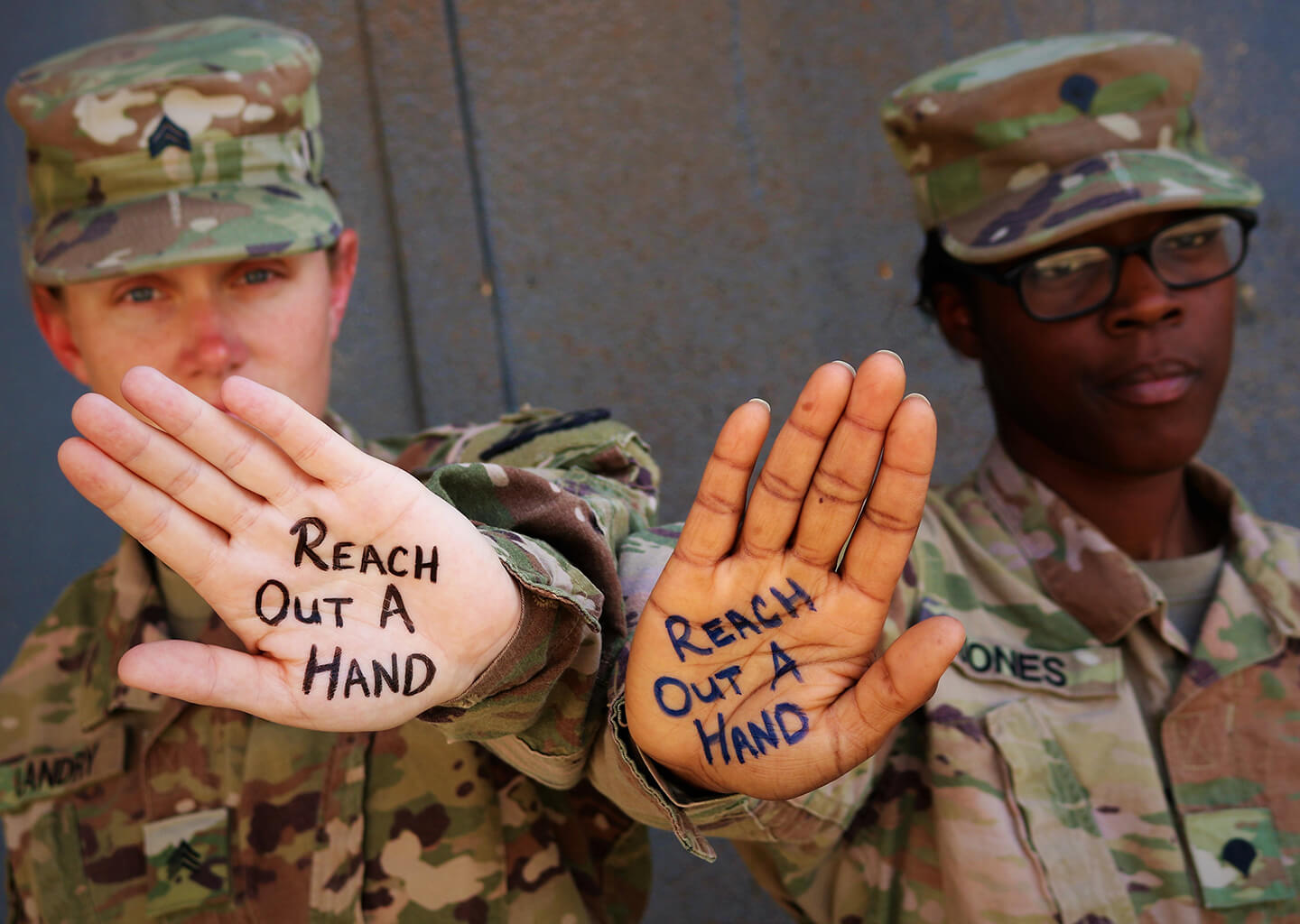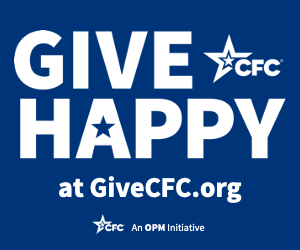The National Guard is expanding suicide prevention efforts to help units identify risk factors and implement intervention techniques.
According to the latest “Department of Defense Annual Suicide Report” released in September 2019, while suicides among the active component have been steadily on the rise over the five years between 2013 and 2018, suicide rates among members of reserve component have remained steady and on par with the general civilian population.
The same report revealed the National Guard had the highest suicide rate among all military components, at 30.6 per 100,000 Guard members. In order to combat its suicide rate, the Bureau has expanded its approach to suicide prevention, according to information provided by National Guard spokesman Maj. Robert Perino via e-mail.
“The Warrior Resilience and Fitness Division was established to synchronize Air and Army National Guard well-being, resilience, and suicide prevention efforts across the 54 states, territories and DC. The goals are to align, promote and enhance wellness and prevention best practices and provide strategic oversight for outreach, innovation pilots and data analysis,” Perino said.
The information provided by Perino includes several National Guard key strategic initiatives:
- SPRING (Suicide Prevention and Readiness in the National Guard): Builds an evidenced-based, data-driven tool to help leaders make informed decisions about the health and well-being of National Guard members.
- Warrior Resilience and Fitness Innovation Incubator (WRFII): State-level pilot programs designed to enhance the readiness, wellness and resilience of geographically dispersed National Guard members. WRFII operated 11 pilot programs in Fiscal Year 2019.
- Vet Center Outreach Initiative: Formal partnership between the National Guard Bureau and the Department of Veterans Affairs to provide greater access to behavioral health services for National Guard members and their families. 300 Vet Centers and 80 Mobile Vet Centers are augmenting existing services provided to National Guard through a Memorandum of Understanding signed in June 2019.
In the Army National Guard, initiatives include suicide prevention training and Master Resilience Training. Additionally, a National Guard brigade in South Carolina is participating in the Secretary of the Army’s Suicide Prevention Proof of Concept through fiscal year 2021.
“This proof of concept targets several new trainings to specific ranks and leadership levels, provides commanders with new risk assessment tools and embeds performance experts into each company that will operationalize resilience in their units,” Perino said.
The Army National Guard also provides direct assistance to commanders to evaluate unit risk including substance abuse, violence and suicide. This helps commanders implement mitigation strategies that are tailored to their units.
For the Air National Guard, initiatives include quarterly leadership talking points that assist leadership in having conversations with their members using “safe messaging.”
“The intent of theses talking points and videos is to spend a few minutes during a regularly–scheduled meeting/briefing to discuss suggested topics and engage with their members in a meaningful way, building connections, and strengthening relationships,” Perino said.
The Air National Guard also created a suicide analysis board in March 2019 that included an in-depth review of 12 Air National Guard suicide deaths from calendar year 2018. In response, the board developed 11 recommendations to prevent future suicide deaths.
According to Perino, the first step to noticing the warning signs of a potential suicide is noticing either changes in behavior or entirely new behaviors.
“Warning signs could include how a person is talking (examples: feeling hopeless, trapped, no reason or purpose to live, being in unbearable pain, being a burden to others, saying goodbye, etc.), their behavior (examples: changes in alcohol or drug use, searching for a way to end their life, withdrawing or feeling isolated, sleep changes, aggression, giving away personal items etc.) or their mood (examples: depression, anxiety, loss of interest, recklessness, sudden changes in mood-both positive or negative, relief or sudden improvement, etc.). You do not have to see every warning sign to act, but most people who take their lives exhibit one or more warning signs, either through what they say or what they do,” according to written materials provided by Perino.
Suicide prevention in the National Guard presents some unique challenges in comparison to the active component, Perino added. Geographic dispersion, time between drill activities, access to care and eligibility for healthcare are all potential factors in how difficult it may be to spot the warning signs of suicide.
“We continue to study how these factors impact the well-being of the NG. Findings from evidence and program assessments are used to inform WRF programs and initiatives, including the development of SPRINGboard, which is a tool for analyzing critical data on readiness and resilience in the NG,” Perino said.
There are numerous resources for National Guard members.
“Guard members can reach out to their leadership, their unit chaplains, the Director of Psychological Health and Family Assistance Centers in their state,” Perino said. “There are also national hotlines to provide support and coaching.”
Other resources Perino outlined include:
- Resources by state are included at https://www.nationalguard.mil/Resources/State-Websites.
- A Director of Psychological Health exists in every state, territory, and Washington D.C., and provides assessments, support, and referrals to local resources.
- National Guard Family Assistance Centers provide a variety of referral-based services to geographically-dispersed families and retirees from all military components. Services include, but are not limited to, crisis intervention and referral, community and legal information and referral, and emergency financial services. Find Family Assistance Centers at https://installations.militaryonesource.mil/.
- Give an Hour is a network of Mental Health Professionals that offer National Guard, Active Duty, reserves, and veterans no cost mental health services to increase access to care. WRF partnered with Give an Hour on the Campaign to Change Direction. https://www.changedirection.org.
In an immediate crisis connect on the phone or via chat:
Veterans Crisis Line: Soldiers or airmen in suicidal crisis should call the Crisis Line at 1-800-273-TALK (8255) – press 1 for veterans.
Real Warriors Campaign: The campaign aims to reduce the stigma of psychological health concerns and encourage Service members, veterans, and their families to reach out for care. To confidentially speak with trained health resource consultants 24/7, contact the Psychological Health Resource Center at 866-966-1020 or use the Real Warriors Live Chat http://www.realwarriors.net/livechat.
Read comments

















































